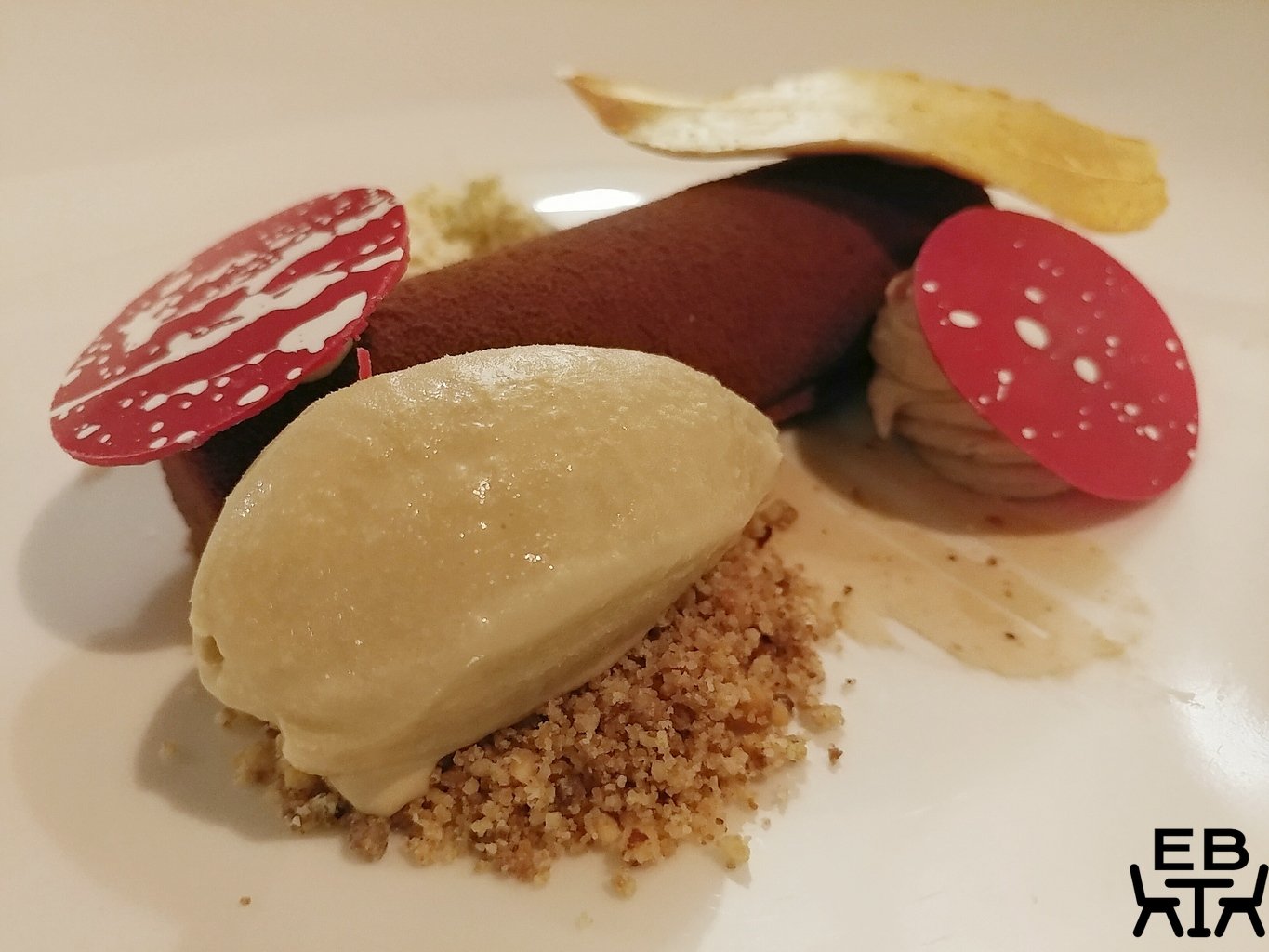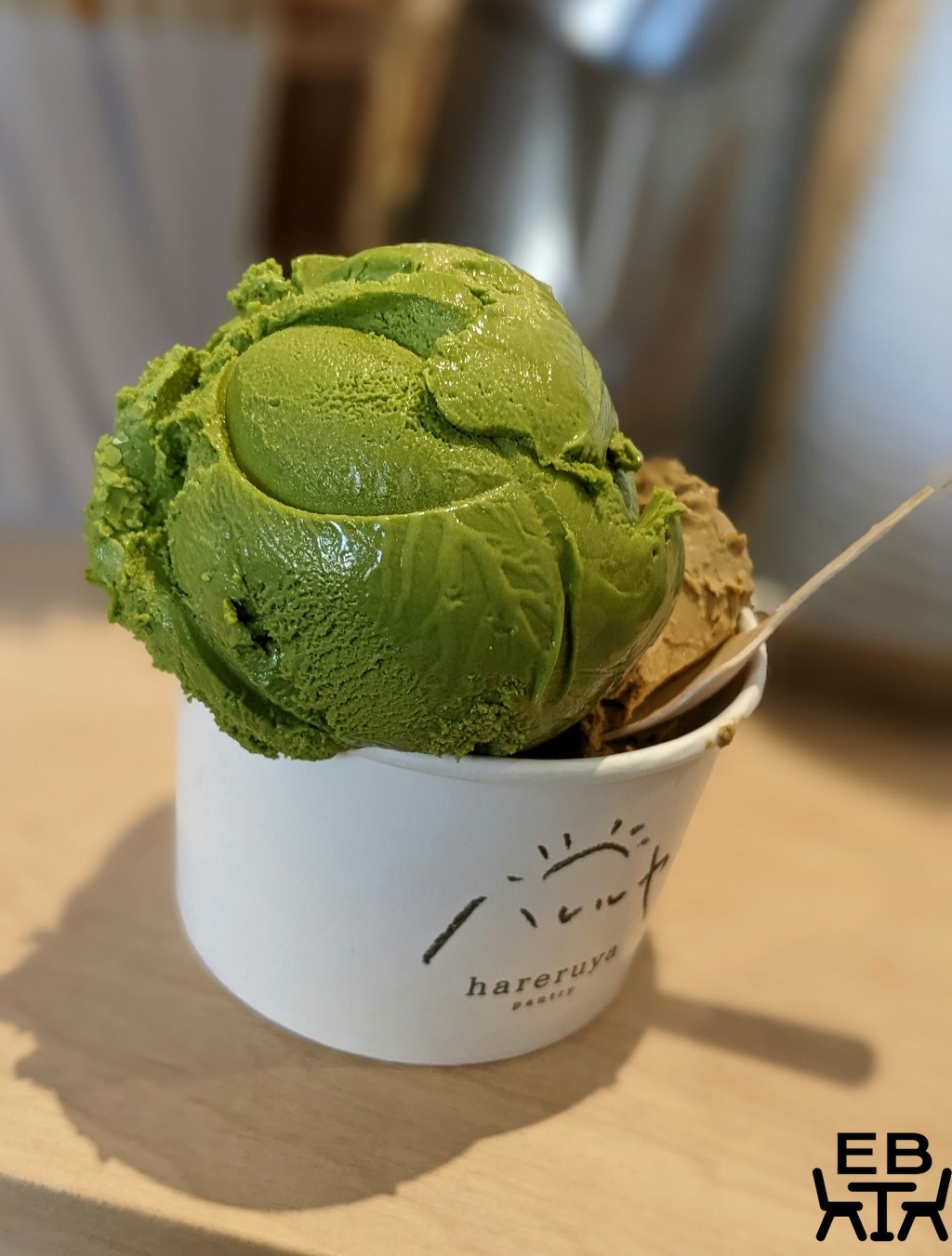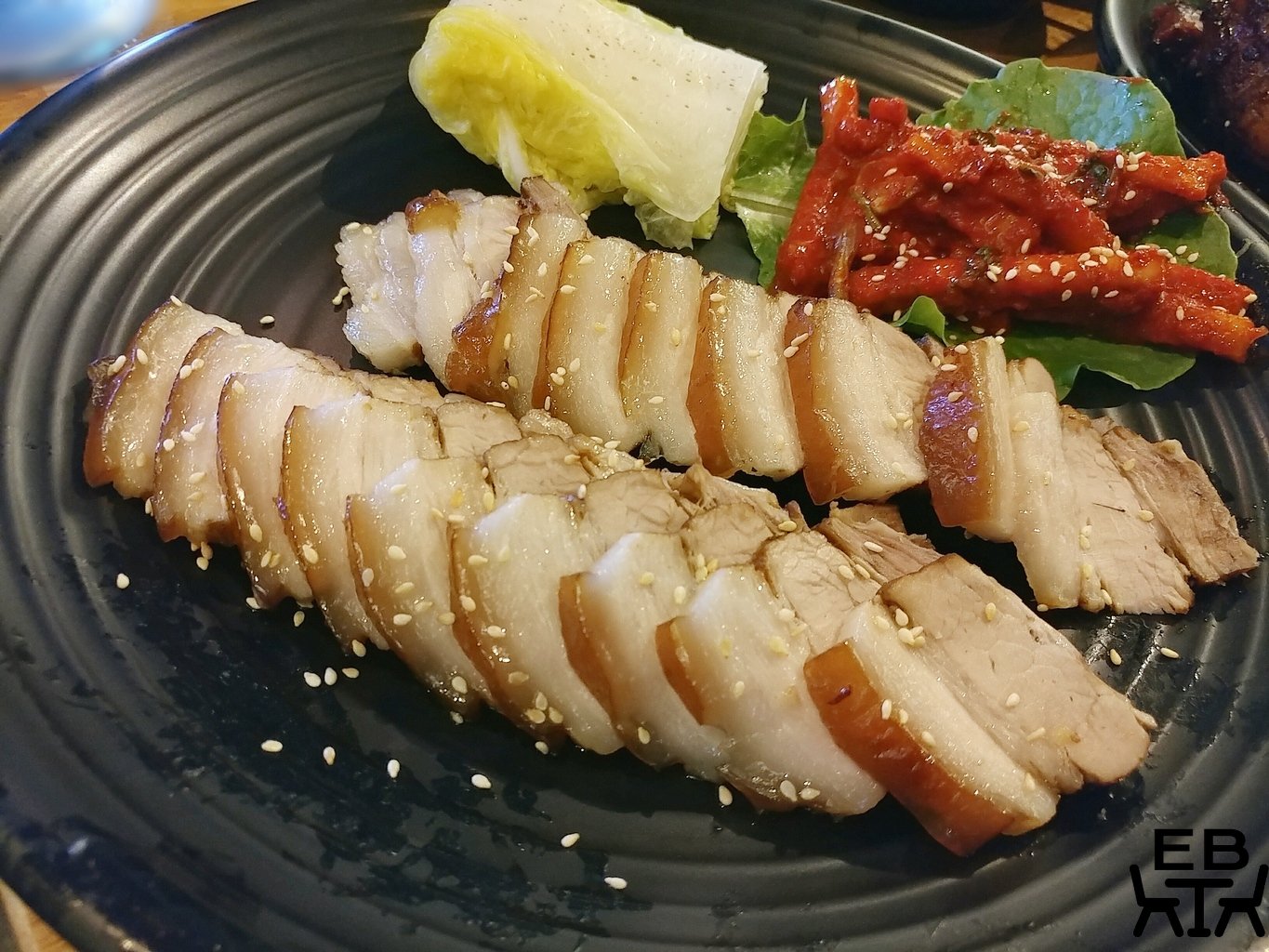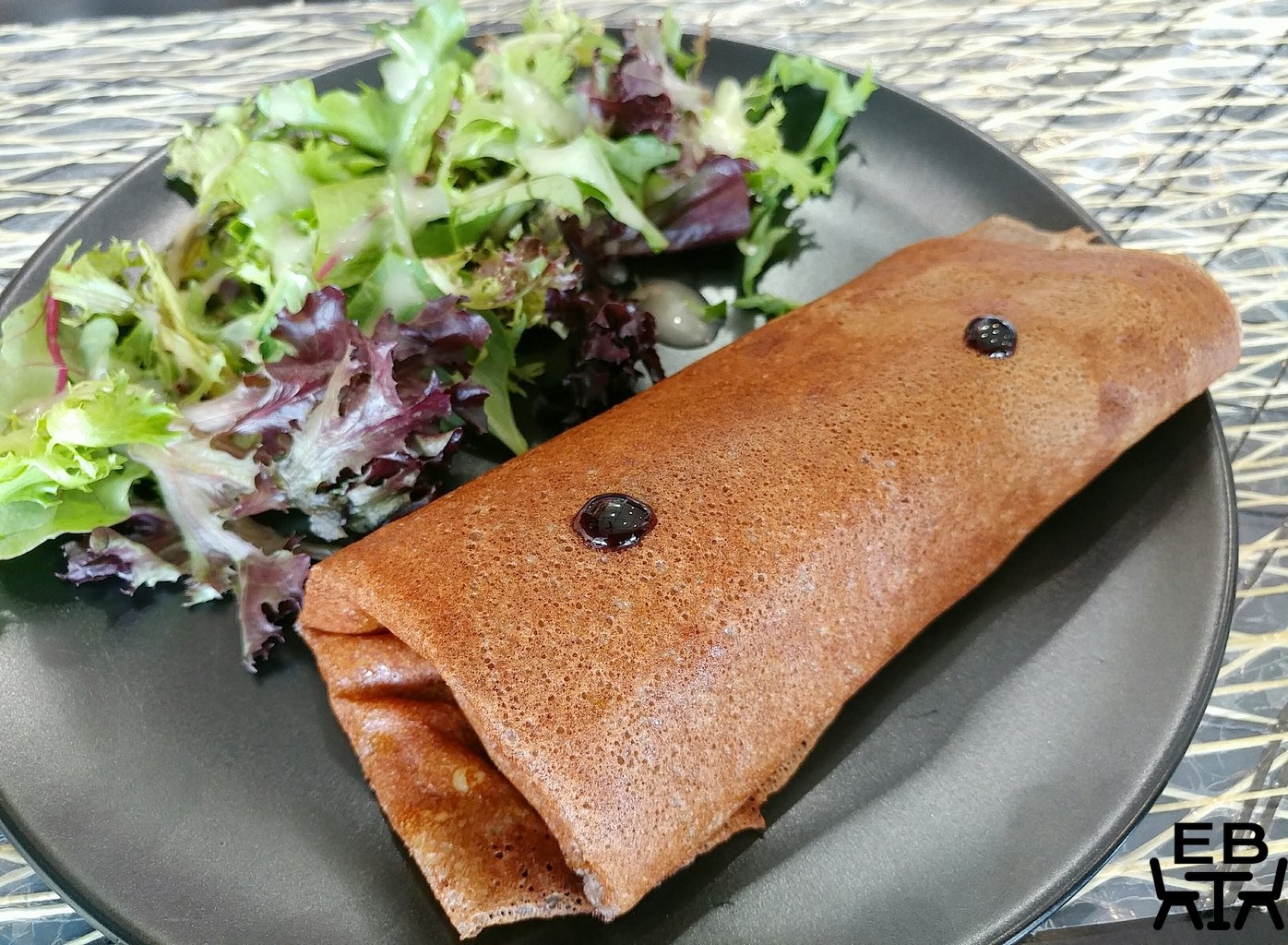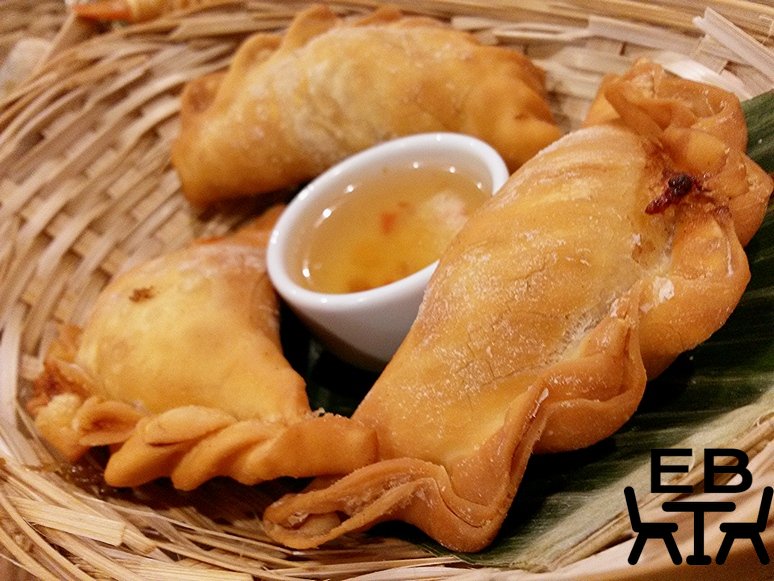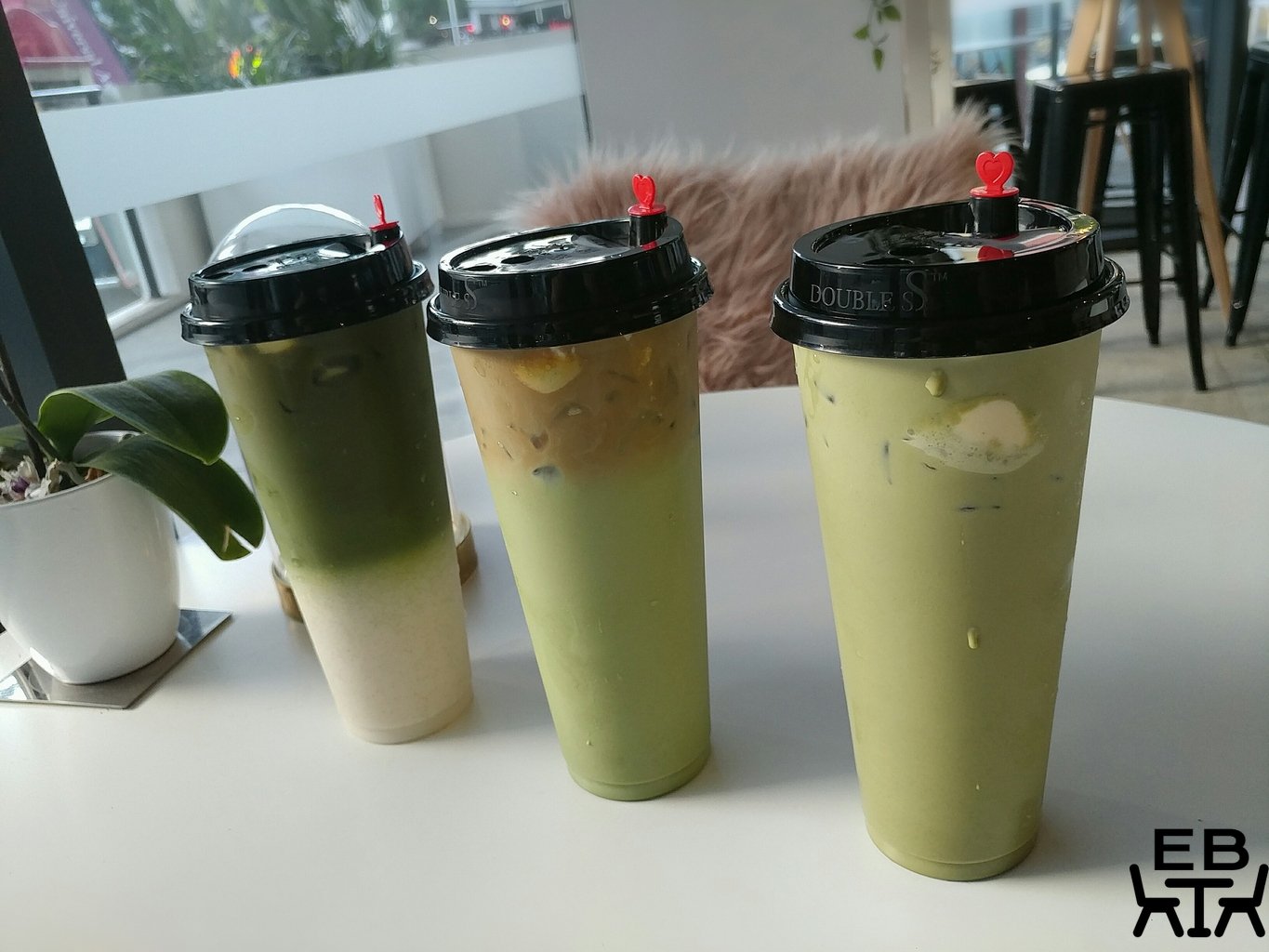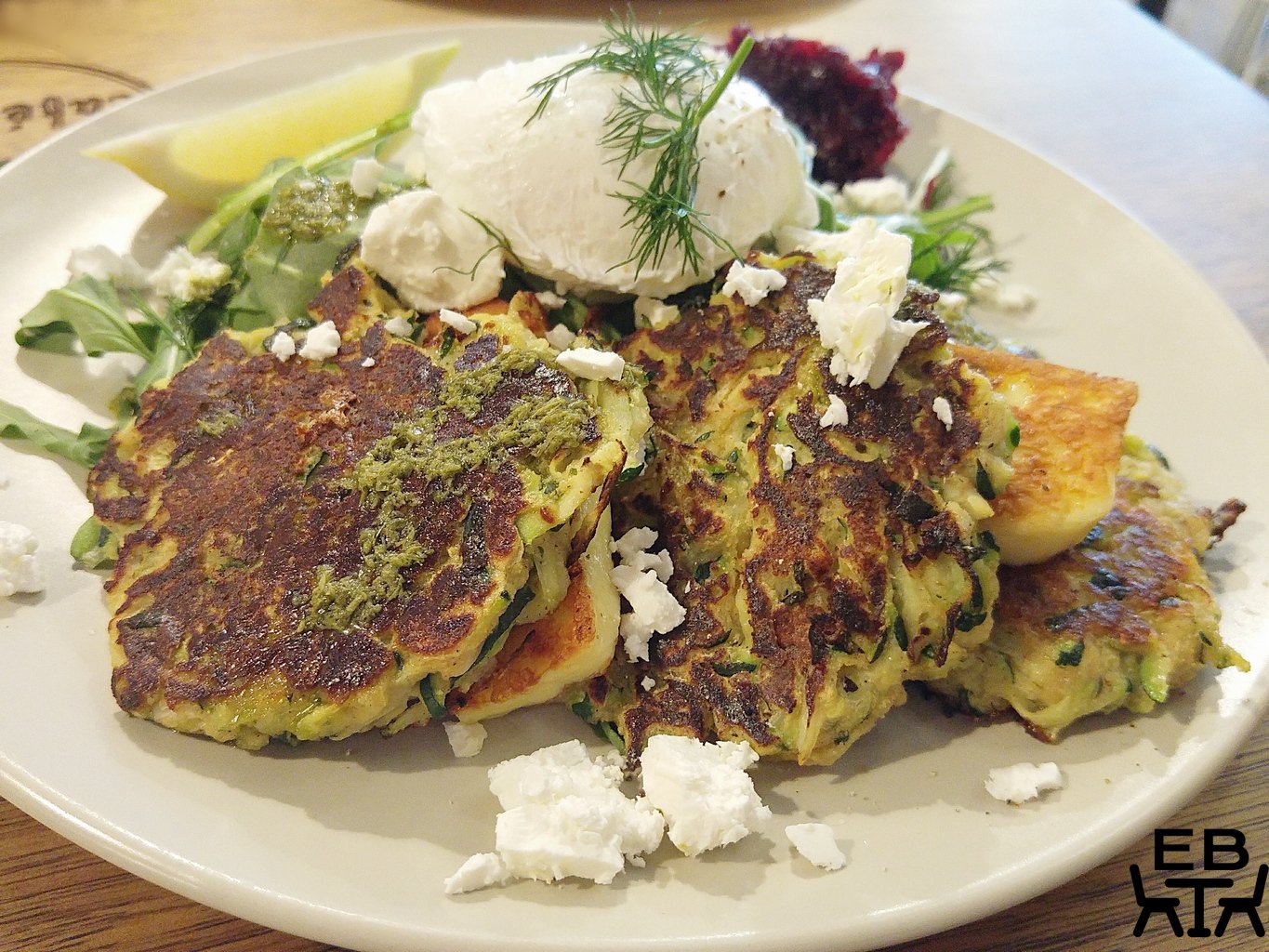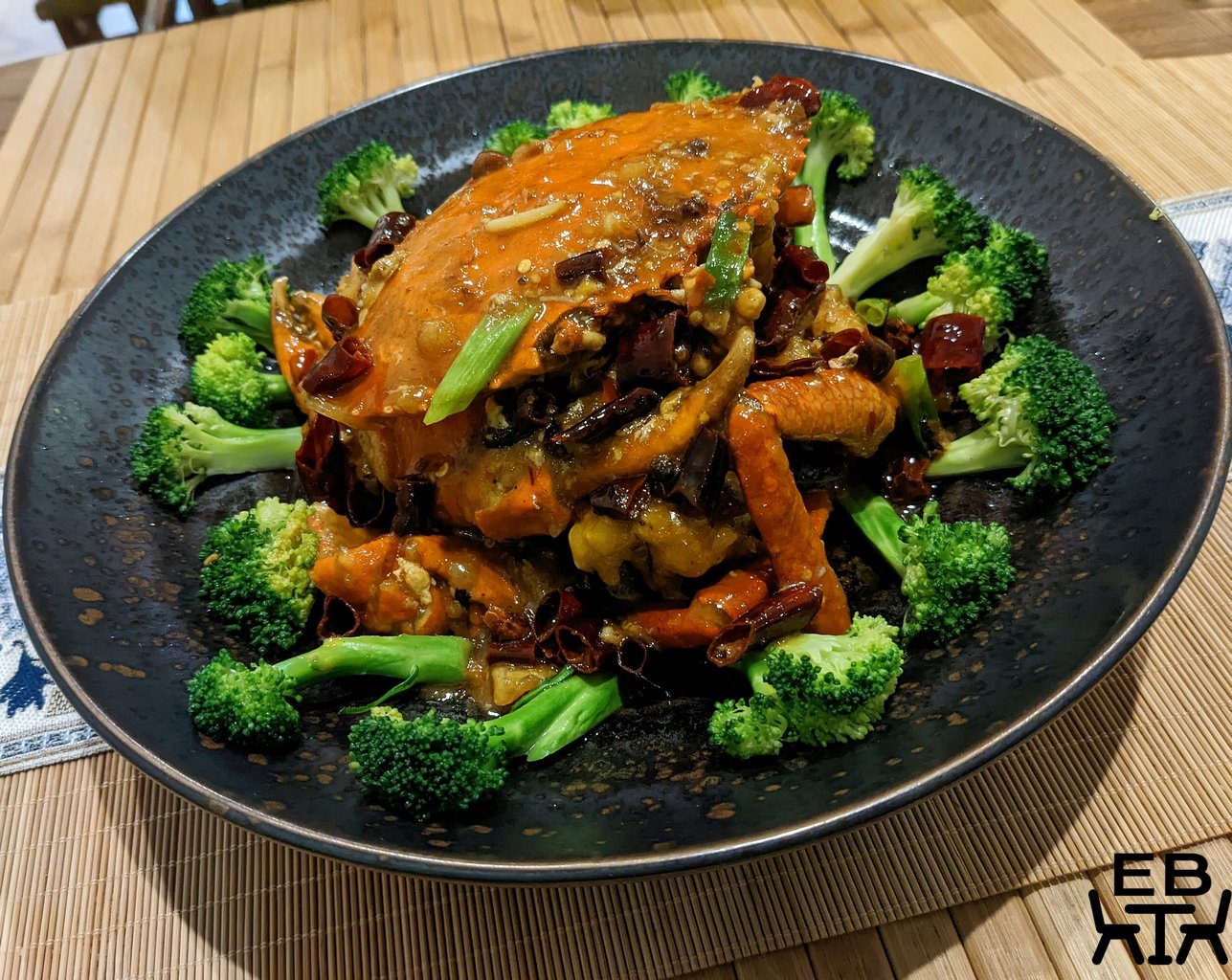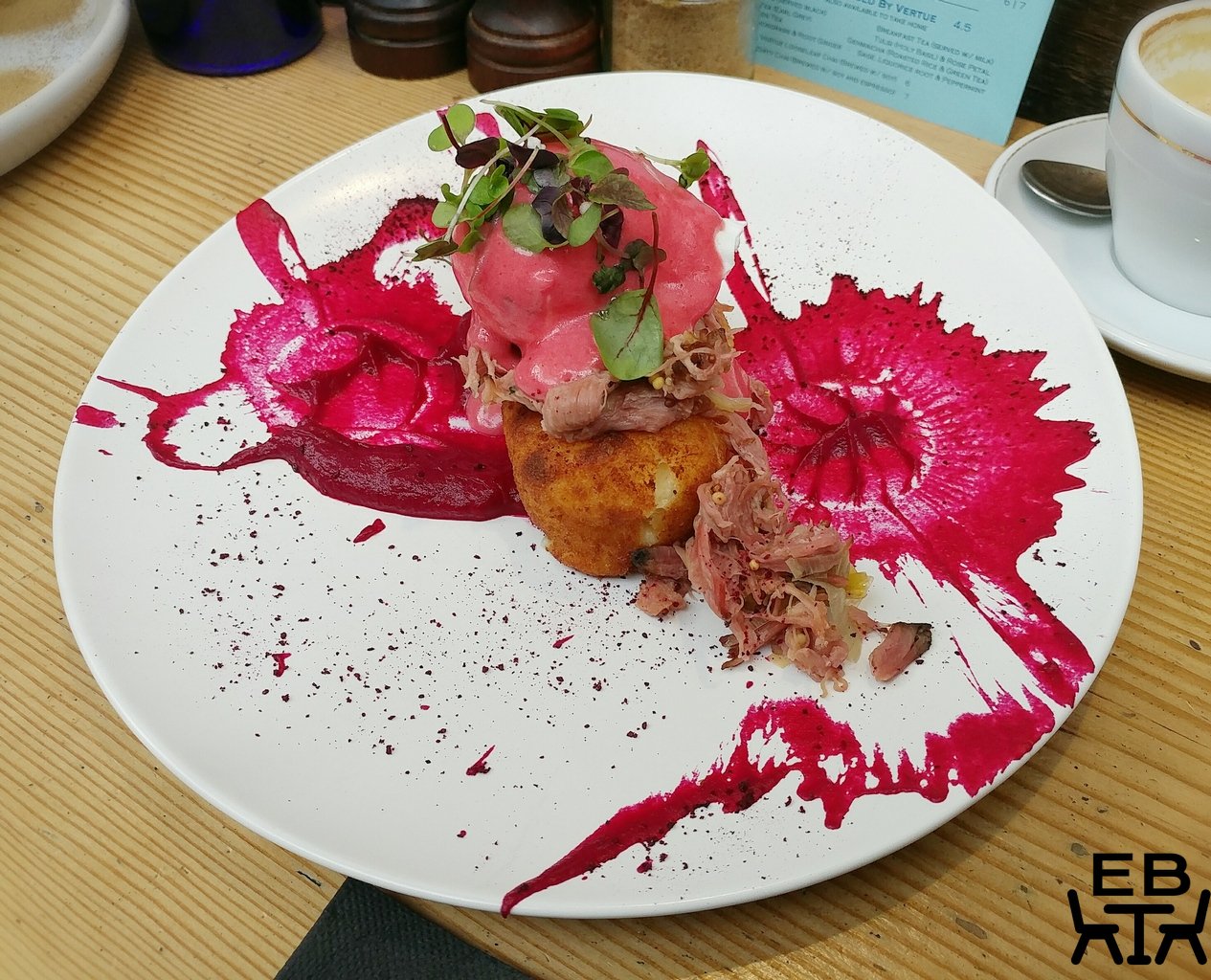Last updated on May 2, 2019
We wanted a great dining experience to round off our time in Croatia, and Dubravkin Put was recommended to us by our AirBNB host in Zagreb. Awarded a Michelin plate, this was clearly a place of high culinary standards. Making a booking through their website was a straightforward process, and we were fortunate to be able to get a lateish slot for dinner at short notice.
The route from our accommodation to Dubravkin Put involved a fairy tale-ish walk from the main part of town through the woods of Tuskanac Forest before getting to the restaurant. It set the scene and built an appetite (our path also involved walking up and down a hill). Coming to the lighted standalone building amongst the trees felt a little like being Hansel and Gretel.

We were greeted by staff after going through the glass double doors at the entrance, and showed to our reserved table. Staff efficiently whisked our coats away, and seated us.

The room was spacious, with tables a comfortable distance apart so that conversations could remain discreet (unless one was a loud talker). As befits an upmarket restaurant, there were white tablecloths over each table, contrasted by a longer black tablecloth beneath those, the colours echoed by the classically shaped chairs, with square frames in a near-black shade, and padded seats and backs in white. There was an extra chair at each table for patrons to place their bags or accoutrements, and as a quirky little touch, these were different at each table.

Wooden floors and light coloured walls continued the classical look. There was an eye catching feature wall at one end with raised concentric circles that looked like ripples on a water surface. Grey panels on the ceiling were most likely sound baffles, keeping the ambient volume hushed. Somewhat incongruously, house music with a prominent beat played over the speakers. It seemed at odds with the chic setting, but it did later transition to more relaxed jazz.

We looked through the menus that were brought to us, but had already more or less decided on the tasting menu, anticipating that that would show off what the kitchen could do. There were 5 and 9 course options, but like Goldilocks, it felt like the middle option of 7 courses was the right number that wouldn’t leave us still hungry or too full. What dishes would actually be served was not described, but we were happy to discover it as we went.
The first things brought to the table, precursors to the actual commencement of the tasting menu, were loaves of house baked bread. The warm loaves were presented in a wooden box, and wrapped in cloth so they maintained their heat. There were two types, one with olives, and one with paprika, and each of us had a loaf of each kind, about twice the size of your standard dinner roll. These were accompanied by a dish of butter and a dish of olive tapenade with olive oil, held in fitting cutouts in a wooden serving block. Both loaves were crusty on the outside and soft but quite dense inside. The paprika loaf packed a bit of heat, but was not too ferocious. There was the risk of making onself too full on just the bread before the rest of the meal arrived though.


The first of the tasting menu dishes to arrive was plated in an architectural style, with elements that stood tall on the plate, and had us off to an interesting start. It was introduced as poached salmon and trout, dehydrated olive oil, and carrot puree. There were more things on the plate than that, but those were the main players. The pieces of fish were cleverly put together so that they formed a single cylinder, as if they were a section off just one fish. When eaten, there was a difference in their texture and flavour, though both were beautifully tender from the poaching. There was a sticky seed paste on top of the cylinder that tasted like aniseed, and had a honeyed sweetness. The dehydrated olive oil had a powdery, lightly grainy texture that slowly melted on the tongue to leave a mild olive oil flavour. It was a different way to present it. Other cylinders on the plate turned out to be an anchovy cream in rolls of thin vegetable slices. The cream was smooth, and not too fishy or salty. The rolls were garnished with flower petals that had a chrysanthemum-like aroma, and imparted a faintly flowery flavour when eaten all together. There was also a sail of toasted cheese, like a crisp tuille. It had a roasted flavour, but wasn’t too burnt. The carrot puree was smooth, and had a natural sweetness. The combination of flavours and textures was not a typical one.




The second dish was smoked duck breast, rye, mushroom, and piped ricotta. This was more simply presented, with the rye grains spread as the base, and the other elements laid over them. The rye was salted, and had a springy chew like cooked barley grains. The duck breast had a strong woodsmoke scent that you could smell as soon as you put your nose close to the dish. It was thinly sliced, and had the texture of chorizo. On its own, it was definitely salty and smoky, but when had with the piped ricotta, was better balanced. The slice of mushroom that topped it was raw, and had a woody flavour. The components were definitely better when had together.


The third dish was a large stuffed gnocchi, with chestnut and cheese sauces, topped with shaved truffle. The gnocchi skin was a little thicker and tougher than we hoped, although done al dente. We have not had filled gnocchi often, and were expecting it to be more fluffy. Inside the gnocchi was a cheese filling, tangy and stronger tasting than cottage cheese. It was a lumpy rather than smooth cheese, and though it was soft, the texture still took some adjusting to. The chestnut and mushroom sauce under it was earthy. This was swirled with a cheese sauce that was also faintly tart. Despite the visibly shaved truffles, we found that the tanginess from the other elements overpowered the truffle aroma.




Our fourth dish was a rooster consomme with rooster gnocchi, fried chicken skin, and pumpkin cream. The consomme was poured into the dish at the table, and the components looked like little boats before they were submerged by the soup. The consomme was rich and savoury, and would make a great winter warmer. The rooster gnocchi were like loose chicken meatballs, tender and not gamey. Although the particular use of roosters was not explained here, we had previously encountered it at Restaurant Kopun, and capons are used in traditional Croatian cooking for their more tender, tasty meat. The chicken skin had been defatted, and made a thin, crisp wafer with a roasted flavour. The pumpkin cream was sweet and smooth, and when had with the other elements made a tasty sweet and salty combination.



The next dish was a seafood dish of Atlantic cod, scallop tartare, turmeric and butter, and a cauliflower puree. The cod, unfortunately, was slightly overcooked, so a little tough. The emulsion of butter and turmeric that accompanied it had a little tartness from the vinaigrette it was mixed with, which gave it freshness when had with the fish. The tartare of scallop was diced into small pieces, but still retained texture. It was mixed with even more finely diced cucumber and ikura. This gave a great textural variation in each bite, from the soft mouthfeel of the scallop, then the more gradual resistance of the cucumber, to the pop of the fish eggs. The cauliflower puree was sweet and a little savoury. There was also a small scattering of chamomile powder on the dish that was earthy and faintly floral.



An intermezzo followed, of horseradish foam, mascarpone, fish eggs, and sparkling wine. Here too was an interesting textural transition from the light, airy foam to the denser softness of the creamy mascarpone. This was a challenging dish as a whole, with the flavours being bitter, sour, and seafoody. While it was meant to serve just as a palate cleanser, it didn’t really have us reaching for more.


The sixth dish was roast lamb from the island of Tris, with parsnip, berry powder, and mushroom souffle. For a meat dish, it was prettily presented, with the leafy green garnish and the bright colour of the berry powder adding some liveliness to the plate. The lamb was tender and had a gamey note that was rich without being unpleasant. A glossy, thick, red wine and berry reduction was striped across the plate, and had a bright tartness that countered the heaviness of the meat. Blueberries on the side of the dish were ripe, juicy, and added another complimentary fruity note. The mushroom souffle was more like a pudding than a true souffle, denser and cakey rather than airy. It had definite mushroom flavours, and to add to the deliciousness, was cheese-filled. In this instance, they could be forgiven for it not actually being a souffle.




A pre-dessert was brought out in a wicker picnic basket. The dishes sat on an astroturfed base, and one had to give them marks for the presentation and that there was an extra dessert. It was introduced as pears boiled in pepper and rosemary, with a tangerine sorbet. The pear slices were still a little crisp, and had pepper flavours without the heat. The tangerine sorbet was distinctly citrussy and mildly sweet. This was cool and refreshing, and certainly a nicer intermediary course than the previous one.


The final course was dessert. The presentation certainly wowed us. It was described as hazelnut cremeaux, porcini mushroom ice cream, chestnut, and chocolate in the menu. On the plate was the hazelnut cremeax in a chocolate log, a leaf made of white chocolate and caramel, ruby chocolate discs, dehydrated pistachio powder, and chestnut cream. We were curious about how a mushroom ice cream would work. The porcini ice cream had an umami, but also dark chocolate-like flavour. It was slightly sweet, with an underlying savoury note, and did actually work as a dessert component. There was a crunchy pistachio and walnut crumb underneath it. The log, which was a central feature on the plate, was made of tempered chocolate. It had a spray coating of chocolate that gave it a textured, matte look. The thin chocolate shell had a nice crisp shatter, giving way to reveal the walnut cremeaux inside. This was creamy, and just mildly sweet. The dehydrated pistachio beside it melted away to nothing in the mouth, leaving a faint pistachio flavour. Ruby chocolate had been receiving some hype, but we had yet to actually try it. These discs were a deep berry shade, rather than the paler colours we had seen around, so may well have been mixed with other ingredients. They too had a good tempered snap, and had fruity berry notes, with a milky chocolate richness. The chestnut cream the discs were perched on was dense, and had chestnut flavour without added sweetness. What had most caught our eye on the dish was the gold leaf. It had the rippled shape of a real leaf, and a realistically detailed imprint. This too was tempered, of course, and when eaten had a rich, caramelly sweetness. There was clearly a lot of work put into each element, and this was one of the most considered desserts we had had in some time.





The service at Dubravkin Put was attentive and professional, and definitely at the level expected for a fine dining restaurant. The meal was well paced, and staff told us about each dish and were happy to answer questions.

Overall, though the tasting menu dishes at Dubravkin Put were a little hit and miss, they were far more hit than miss. The dessert certainly finished it on a high note, unlike at a number of other degustations where dessert was a let down. There were combinations of components in the dishes that were different from what we had tried elsewhere. Although we had contemplated ordering another dessert when we were initially perusing the menu because they sounded intriguing (one included a foie gras ice cream), 7 courses was about the right number, because we were full enough at the end without being overstuffed. It was indeed a culinary adventure, and a nice conclusion to the trip. Be sure to leave yourself enough time if you plan on having the tasting menu though, as we were there for about 3 hours.
For recommendations of other places to eat and visit while in Croatia, see our post of Croatia Travel Tips..

Scores:
Food: 3.5/4
Setting: 1.5/2
Service: 2/2
Total: 7/8
Price point: 7 course menu for 495 HRK (about $105 AUD). 5 course menu for 390 HRK, 9 course menu for 590 HRK.
Value: Compared to what you would get in Australia for a similar price, excellent.
Details:
Address: Dubravkin put 2, 10000, Zagreb
Phone: +385 1 4834 975
Website: Dubravkin Put
